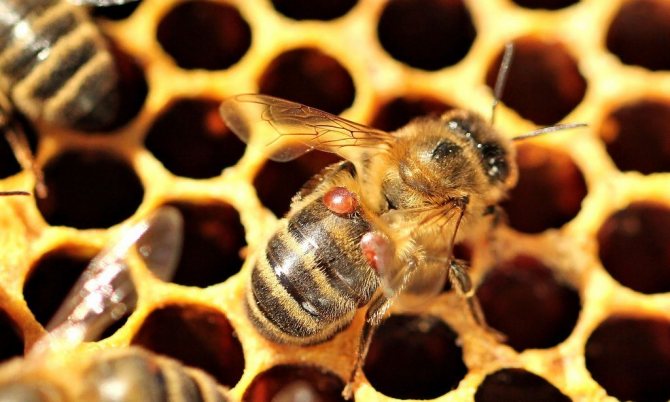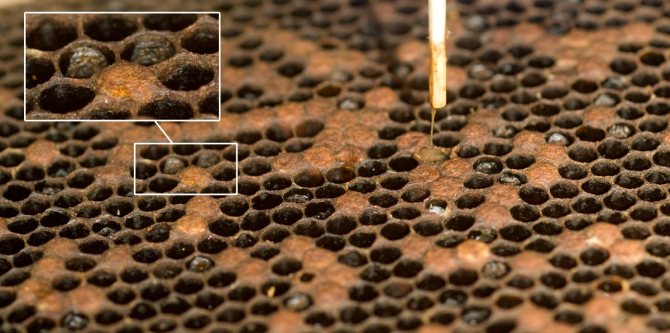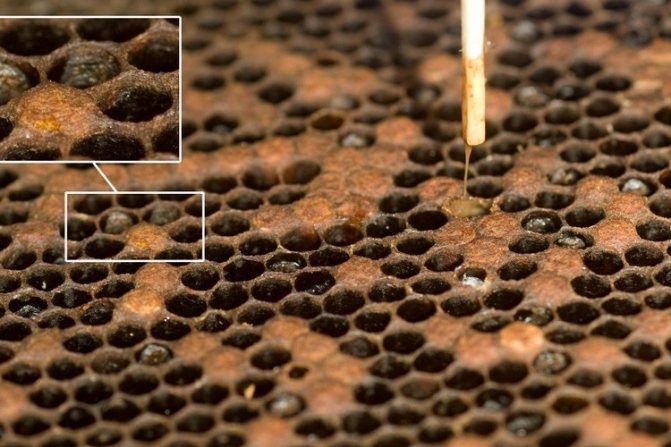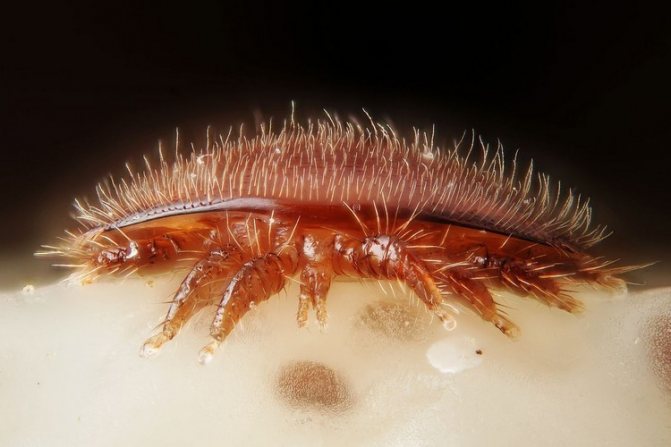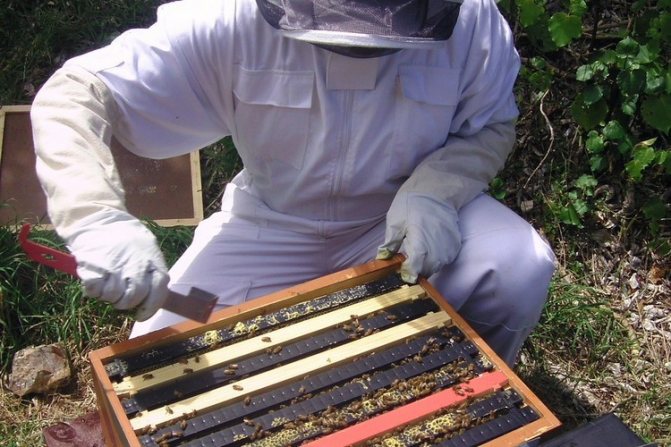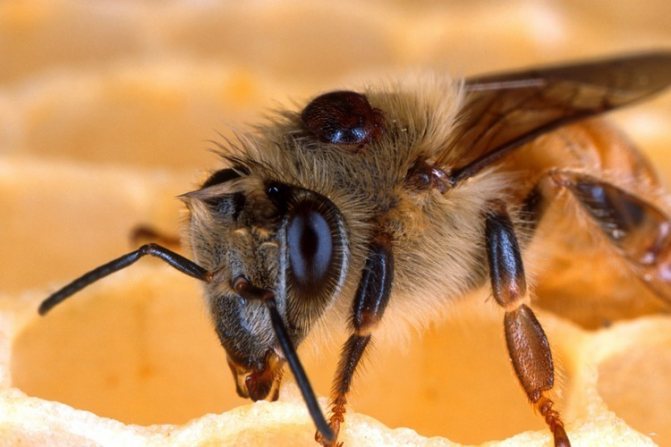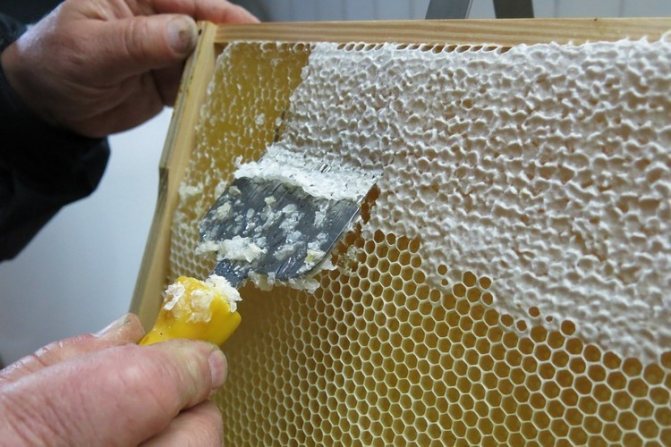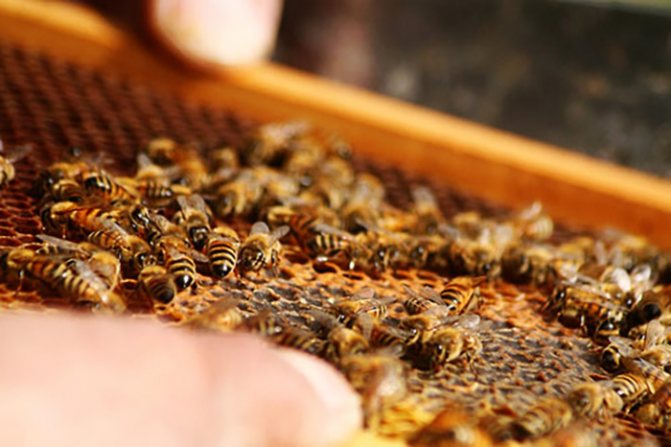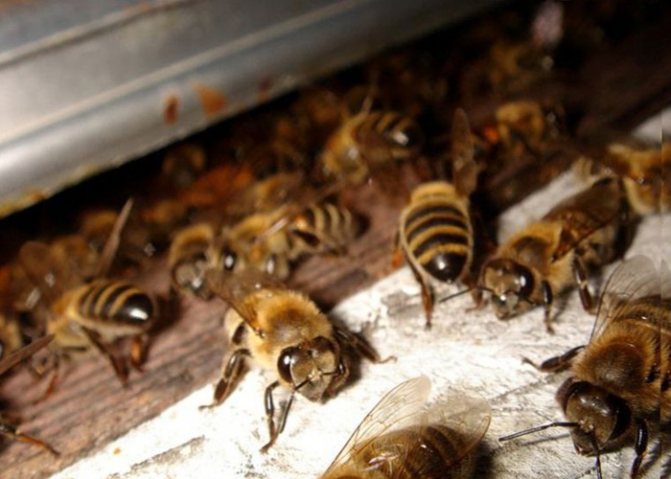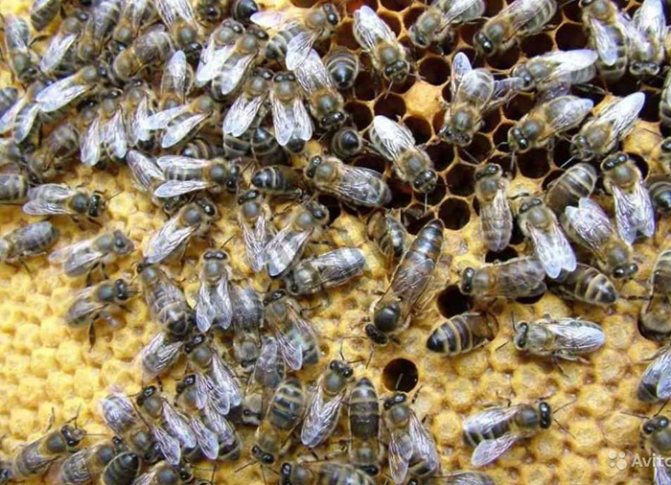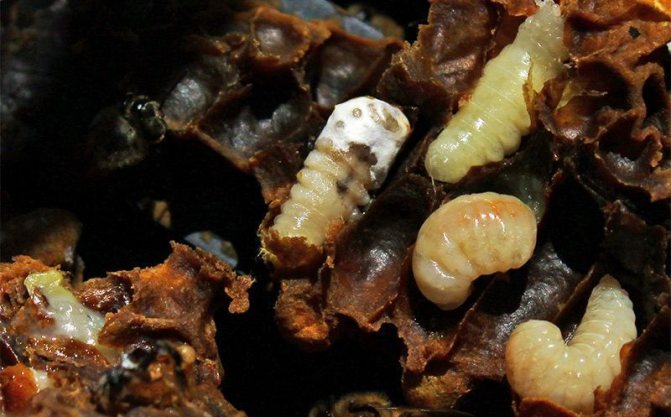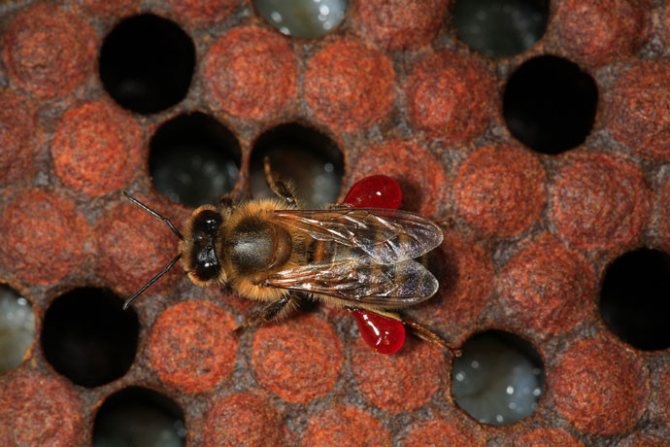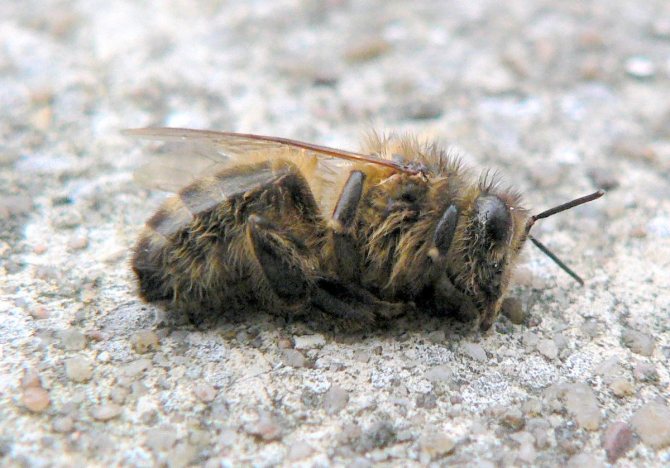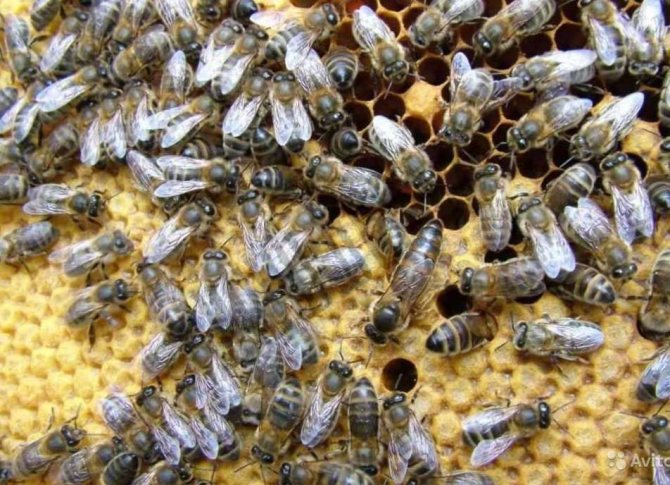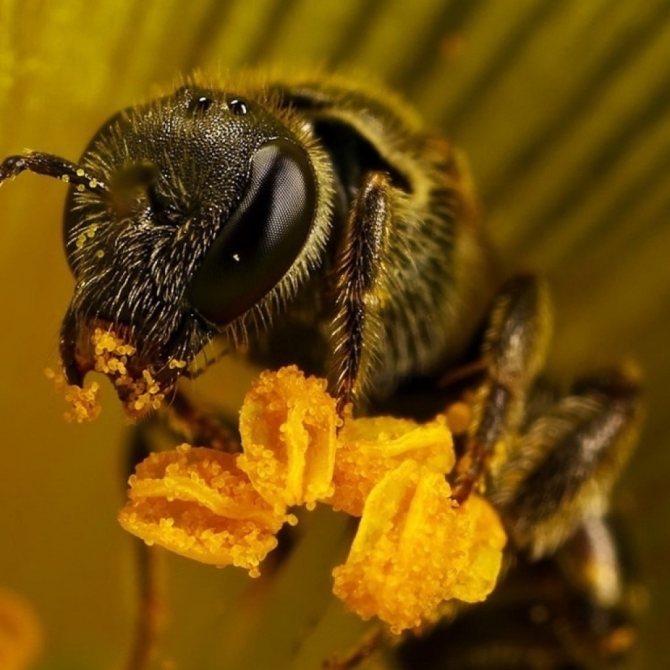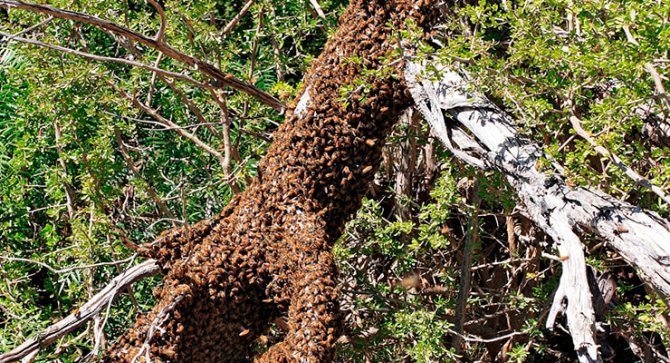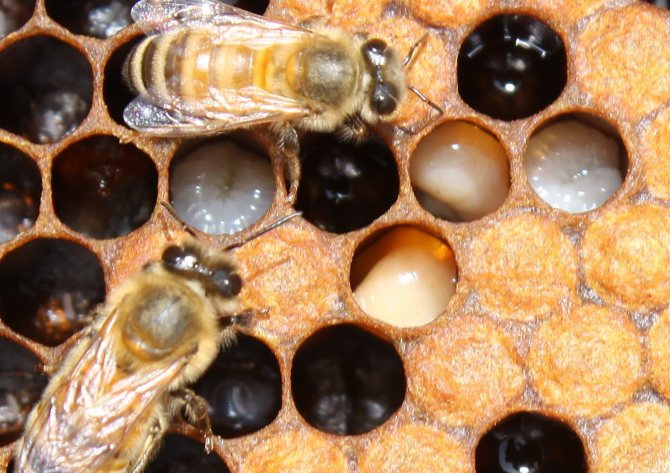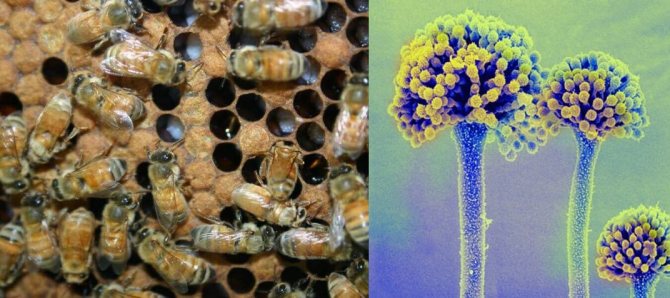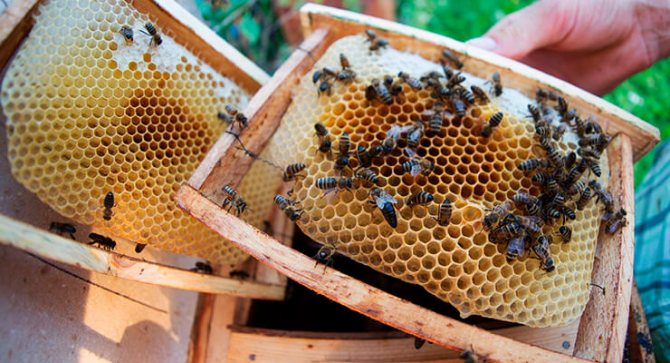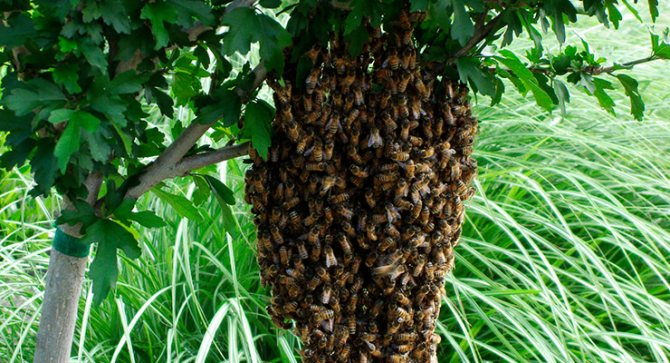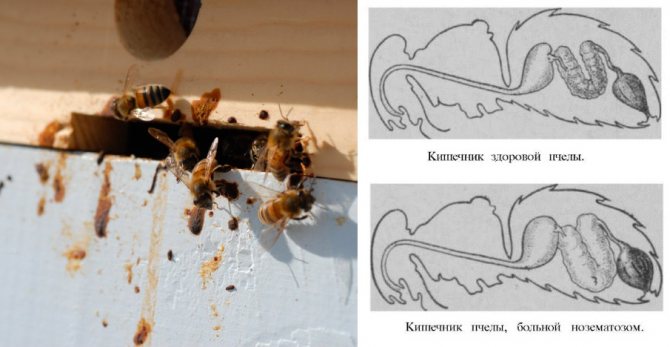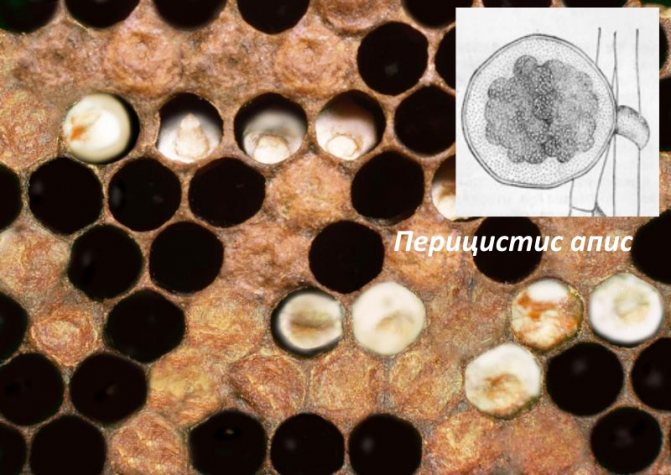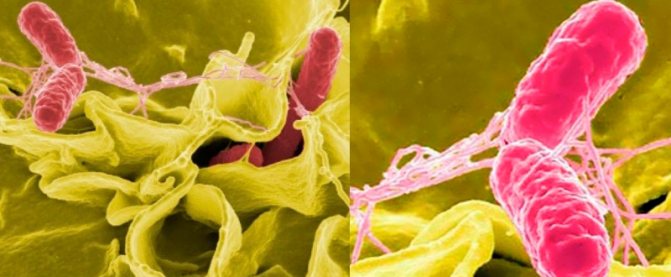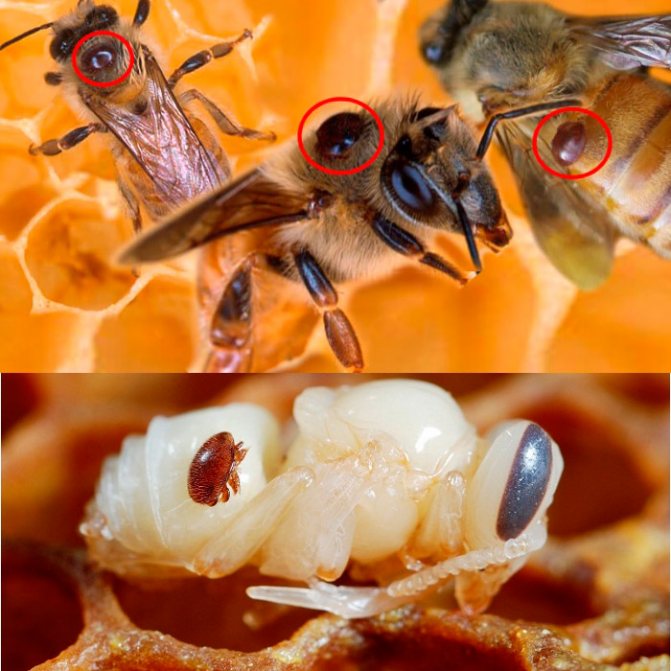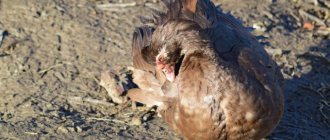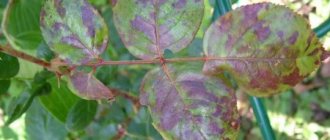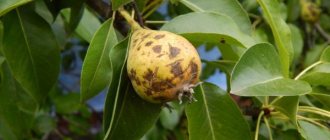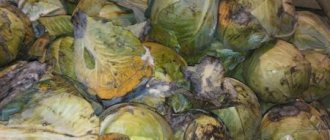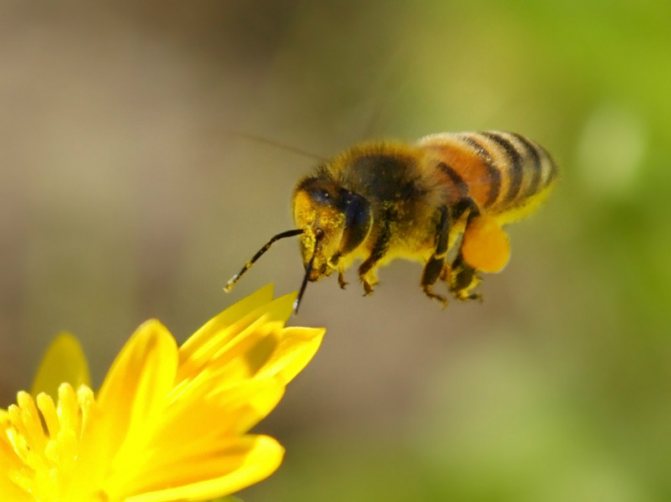
A terrible dream of any beekeeper is a disease in bees. Indeed, if you do not find out the cause of the disease and do not get rid of it in time, there can be disastrous consequences - up to the loss of the entire bee colony.
Out of nothing, diseases do not arise, there are conditions in which this or that sore develops. But do not panic, because there is a classification of diseases and pests of bees - therefore, the problem can be diagnosed in advance.
Question and answer
Cold, lack of nectar or swarming are unpleasant for the apiary, but their consequences seem insignificant to anyone who has encountered an infection that affects bees. Diseases of families caused by ticks, fungal and viral bacteria, or parasitic unicellular organisms are like a violent fire. Outbreaks of various diseases entail disastrous consequences for the economy, but they can be prevented if you do not neglect the recommendations of specialists who give detailed answers to questions about bee diseases, their diagnosis and the use of drugs.
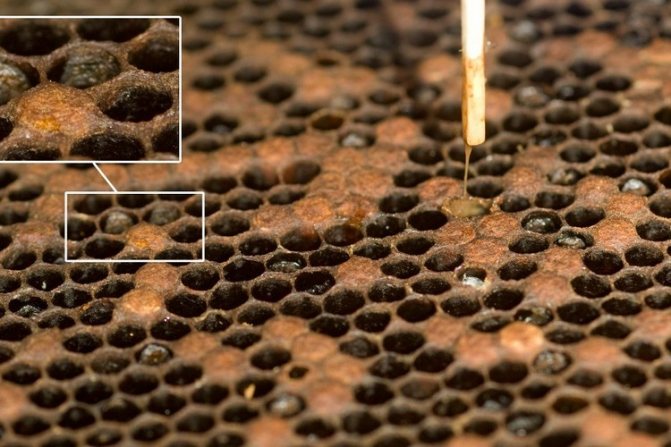

1. Can varroatosis be cured? Is it possible to completely rid the apiary of the tick?
Varroatosis is the most dangerous disease of bees that requires long-term treatment. Theoretically, if all beekeepers follow the recommendations for its prevention, a 100% cure can be achieved. Practice shows that regular measures against varroa reduce the degree of infestation of bee colonies to 2-3% and they can be profitable for the apiary.
2. In the summer, a family of bees was found under the hive. Some had wings spread wide, others were wingless. Is this a consequence of varroatosis?
Yes. The attack of ticks on bees leads to the death of the family. The life span of adult honey collectors is reduced to 1.5-2 times. A new generation of defective bees with undeveloped wings or other abnormalities is born from nests damaged by parasites. Families suffering from varroatosis cannot survive the winter. Beekeepers need to carry out preventive treatment against ticks in spring and autumn. To exclude other diseases developing due to varroa, some wingless bees should be sent to the veterinary laboratory for research.
3. How effective is Apistan for controlling varroa mites?
According to the results of experimental studies, Apistan is 99-100% effective.
4. Is the Bipin remedy reliable in the treatment of varroatosis?
The healing effect of Bipin is 96-98% if you follow the instructions when using it. It is recommended to use the product in autumn, when brood does not appear and bees do not fly to the honey collection.
5. Is it true that the effect of the drug against varroatosis decreases with constant use?
Long-term use of one agent against varroa leads to a decrease in the effectiveness of treatment. Parasites acquire resistance to the action of the drug after 3-4 years. It is necessary to change the drug or use several, alternating courses.
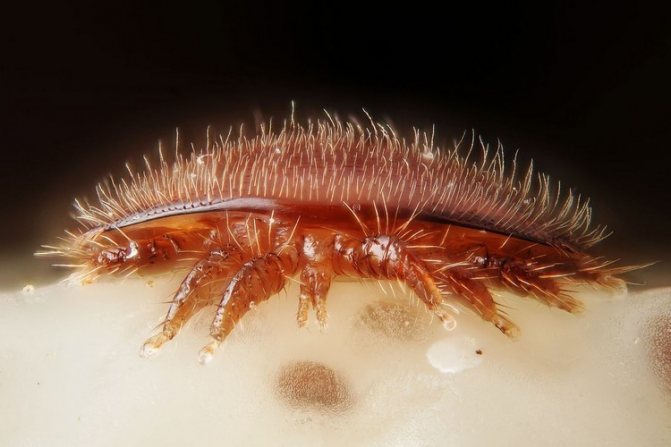

Varroa mite is the most dangerous pest in bees
6. Treatment of bee families with Apistan is recommended to be carried out in spring or autumn, but is it permissible to use it a second time - in summer?
Apistan treatment is carried out until the brood appears, leaving it with the bee colony for up to 3 days. If the infestation with a tick increases during the summer period, it is impossible to hesitate with processing. In hives where there are brood frames, Apistan plates are kept for about 30 days.
7.Will there be a result in the treatment of severe varroatosis with herbal remedies?
With a large infestation of bee colonies with a tick, it would be more reasonable to use potent agents or conduct heat treatment. Herbal preparations are used after intensive control measures.
8. How long will varroa mites live in combs stored in a closed warehouse?
Varroa survive inside empty combs left at t 16-20 0 С for about 30-40 days. It is recommended to keep the frames attacked by them "in quarantine" in a separate room for at least 45 days.
9. To get rid of the varroa mite, the nest was treated with formic acid, but the bees flew out of it. Why?
When treating hives with formic acid, the correct concentration must be observed. An increased dose of the product or poor ventilation of the nest provokes a family gathering. The reason for her abandonment of the house could be the loss of the queen bee.
10. On one part of the frame there was a brood of different ages (only hatched larvae and pupae). Is this situation normal?
Combs with brood of different ages indicate that the colony is too weak or sick with foulbrood. Once on the frame, the queen sows eggs in all the cells in a row, and the brood goes through the growth stages synchronously. When the combs are infected with foulbrood bacteria, some of the embryos die, and the female fills the vacated cells again. So, the larvae of the late and early periods of development are nearby.
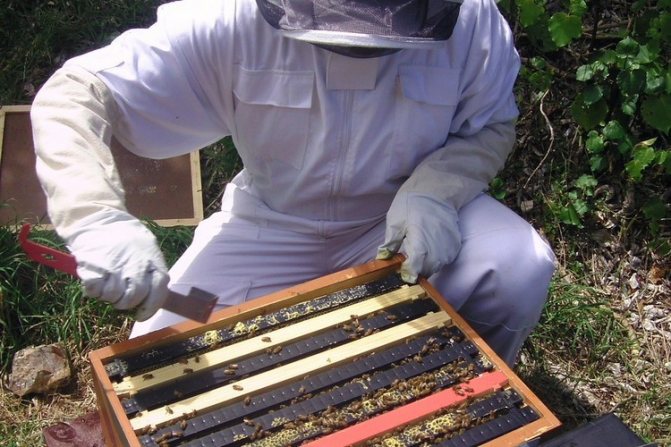

Pseudomonosis or septicemia
The disease affects adult bees. It is caused by the bacterium Pseudomonas apisepticum. The microorganism multiplies at high humidity in the nest.
The hemolymph of sick bees acquires a dull white color. Insects cannot fly, so they crawl on the ground near the hive. Then they become lethargic, inactive and die. The dead individuals darken during decomposition.
The diagnosis is confirmed by bacteriological examination. In addition to sanitary measures, you should:
- move the apiary to a dry place;
- drive the bees into dry hives;
- cut and insulate the nests.
Sick bees and insects suspected of having an early stage of the disease are given antibiotic food.
Types of bee diseases
All of the above causes of diseases and their negative impact on the entire swarm family can result in the death of a large number of "honey" insects. In order to prevent such a deplorable result, each beekeeper should know the diseases, so to speak, "in the face", so that it can be done on time prevent their spread, use the necessary methods of active treatment and control.
From the above, it follows that insect diseases are divided into 2 categories:
- Non-communicable diseases.
- Infectious diseases (contagious).
Each of these subspecies of diseases have their own symptoms and complications, and each of them must be actively combated. And in order for this struggle not to be in vain, and its result turned out to be positive, the beekeeper needs to possess the correct information. about types of diseases and how to treat them.
Features of non-infectious diseases of bees
- Beekeeping cannot fully exist if you do not follow all the rules regarding the provision of normal living conditions for insects - correctly and in a timely manner to feed, maintain and breed. It is because of this that non-communicable diseases arise.
- Bees cannot fully exist if they are not fed with honey, bee bread and water.
- It should be remembered that spring is a period of active brood development, so you need as much liquid as possible. When the collection of honey begins, so much water is no longer needed, because it is contained in the flower nectar. If there is not enough water, disease occurs.
- Cold nests lead to non-communicable diseases.
- In this case, the diagnosis of bee diseases is very important, with its help it is possible to distinguish between non-infectious and infectious diseases of bees.
What it is
The process of swarming of bees in hives is a condition in which a certain number of them try to separate from the entire brood. The result is a new young cut, ready to function independently. It is this readiness for swarming that is the reason that some workers leave the apiary from the hive, leaving the rest without a queen. But they will have to bring out a new queen for themselves and gradually build up their strength.


On the one hand, swarming is a positive phenomenon of family division, which makes it possible to increase the number in the apiary. But, if the beekeeper misses the moment and cannot catch the separated ones in time, he will simply lose them, since they will fly away.
Therefore, it is important for the beekeeper to know the following points:
- When it is time to swarm the swarm.
- Be able to work with swarms.
- To carry out prophylaxis in the apiary against swarming of bees, that is, to carry out anti-swarming measures in the apiary.
- Be able to catch new detached bees.
- Identify the uterus.
- Know ways to encourage your winged pets to swarm in a controlled manner when new layering is needed.
Preventive actions
In order for the apiary to function normally, it is very important that the beekeeper completes the following tasks in a timely manner:
- provided the necessary conditions for keeping and feeding bees;
- observed all the standards for the care of bees;
- was engaged in the prevention of pathogens of infectious diseases entering the apiary.
In case of any suspicion, the infected bee colony is quarantined and immediately referred to a specialist. The disease can be contagious and non-contagious, it can be provoked by microorganisms or be the consequences of poisoning with nectar or pollen.
Some diseases are considered natural, such as aging of the uterus and the extinction of her hive. Each of the diseases has its own symptoms, methods of treatment, as well as ways to prevent and prevent further spread.


Swarm capture
When it was not possible to prevent the occurrence of the process itself, then you will have to catch those who are trying to leave the apiary. To do this, perform the following manipulations:
- Expose swarms of about 2-3. When the new layers flew there, they are placed in a cool place so that they calm down a little and then planted in a new house.
- If there is no swarm, then just an empty piece of evidence or a box, in which, without fail, frames with honeycombs are placed, will be suitable for these purposes. But, in order for the attention of the family to be drawn to this structure, it is coated with a special bait.


What and when do bees get sick?
Diseases of bees and their treatment are directly related to the change of seasons.
Prolonged wintering can end with an outbreak of nosematosis - bees will begin to die from diarrhea. Also, insects that have not been treated with special preparations in the fall suffer at this time from varroatosis - one of the most common diseases caused by the Varroa destructor mite. In late spring, an infectious disease of fungal origin, ascospherosis, may develop.
No less dangerous is the discovery of saccular brood in the apiary, caused by a filtering virus. Larvae of 2-4 days of age are most sensitive to these diseases. In the summer, the risk of spreading American and European foulbrood and melanosis increases (the infection destroys primarily the queens).
There are also year-round infections such as aspergillosis or stone brood that can infect both adults and young animals themselves. The trigger for this infection is high humidity (for example, keeping hives in poorly insulated winter quarters or periods of prolonged rains in summer).
Causes of diseases
The main cause of diseases is the lack of complete protein in the feed framework. It is contained in bee bread, which includes proteins necessary for the development and life of insects, as well as the cultivation of healthy larvae.
The second reason is carelessness in working with families. Theft during the free period and hypothermia of nests also contributes to the spread of infections between insects. In fact, any stressful situation in an apiary is a potential opportunity for a disease outbreak.
How to determine family health
A regular inspection of the bee's nests helps to correct the diagnosis. An attentive beekeeper is able to reveal the state of the family by indirect signs. Inspection results indicating healthy insects:
- balance between adults and the amount of brood;
- sufficient stocks of feed;
- good work of the queen (brood is compact, has no gaps, there is a printed and open brood).
The strength of the nest is determined by the number of occupied frames. A fully occupied frame contains an average of 200-300 grams of these hardworking insects.
Classification of diseases
Beekeepers have developed a classification of bee diseases based on several factors:
- the season of morbidity (this classification is conditional, since most diseases manifest themselves in the summer);
- the age of the diseased bees - there are diseases that affect adult insects or brood;
- anatomical and clinical signs, which are manifested by differences in behavior.
The most common classification is based on the degree of danger and origin, according to which diseases are distinguished:
- non-infectious, or non-infectious;
- infectious, or infectious;
- invasive, or parasitic.
Types of non-communicable diseases of bees
Pollen toxicosis
This disease occurs when an insect is poisoned by it when collecting pollen, most often this happens after the insect has pollinated aconite, tall burgundy, wild rosemary, hellebore, they feed on pollen for the full development of the brood, the energy that they need for the structure of the honeycomb ...
The table "Features of the course and treatment of pollen toxicosis" presents the symptomatology that is characteristic of it, methods of treatment and prevention of the disease.
Table "Features of the course and treatment of pollen toxicosis"
| Symptoms | Treatment methods | Prophylaxis |
| In case of poisoning, it is very important to feed them with sugar syrup. | Bees need to drink as much as possible, so make sure they have water at all times. |
Nectar toxicosis
Nectar toxicosis occurs when nectar is taken from a poisonous plant. Dangerous for bees are such plants as - saffron, tobacco, tulip, cornflower, euphorbia, wolf berries, broom, wild rosemary, etc. Insects are poisoned due to the fact that these plants contain essential oils, alkaloids, andromethoxin.
Such honey can even lead to human poisoning. After the toxin enters the intestinal area, it begins to be absorbed with the help of hemolymph, because of this, the poisoning is acute, the insect has an intoxicated state. If a small amount of such nectar has been collected, the bee may recover after a while. The table "Signs and methods of dealing with nectar toxicosis" is described in more detail.
Table "Signs and methods of dealing with nectar toxicosis"
| Signs | Control methods |
|
|
Chemical toxicosis
It occurs when a bee colony is poisoned by food that beekeepers use for medicinal purposes. Because of this, adult bees live much less. Dangerous for insects such drugs as biomycin, tetracycline, streptomycin, fumagillin, at first they do not eat, then they can die from exhaustion.
In this case, it is very important to use the medicine only after medical advice, in no case should the dosage be exceeded.
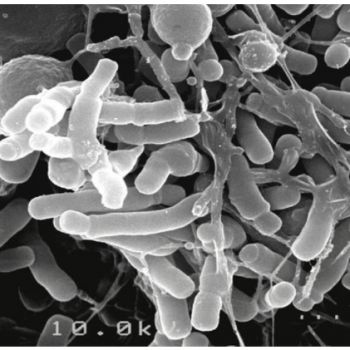

Alimentary dystrophy or starvation
It is a disorder of the metabolic process, due to the fact that they do not have enough feed, it does not contain enough nutrients. This leads to the death of insects and their brood. In this case, it is necessary to pay attention to young insects, which are small in size, and their wings and belly are also undeveloped. They immediately get rid of such brood, throw it out of the nest. Allocate protein, carbohydrate dystrophy.
Beekeeping must take all preventive measures, which can be found in the table "Causes and prevention of alimentary dystrophy".
Table "Causes and prevention of alimentary dystrophy"
| The reasons | Preventive measures |
| Provide insects with food, while adhering to hygiene; If the bees are hungry, it is necessary to use honey, sugar syrup, bee bread, its substitute for feeding. |
Thus, non-communicable diseases and their treatment depend on hygienic rules, adherence to the feeding regime, and care by bee families. Prevention of bee diseases is very important for the preservation of the apiary.
Steaming bees
It occurs when insects are exposed to high temperatures, high humidity, while the bees behave agitated. This happens if the hives are poorly ventilated, bees are transported in polyethylene, in a heat chamber. Almost the whole family can die, it suffers from oxygen deficiency. In the table, you can get acquainted in detail with the symptoms and prevention of this disease.
Steaming characteristic table
| Symptoms | Prophylaxis |
|
|
Honeydew toxicosis
The disease occurs due to the fact that insects feed on honeydew or honeydew species. At the same time, the bees have problems with the digestive system, intestines, so they can not stand it and die. In summer, due to the disease, larvae, hard-working bees can die, winter is dangerous for the whole family. Willow and oak pad is toxic. To protect yourself from this disease, it is necessary to check the honey, whether it contains honeydew, it is very important to get rid of such a product in time. If there are no plants to bribe in a certain period, you need to plant them.
Please note that diseases and pests of bees can significantly harm the apiary, destroy it in significant quantities.
Enterobacteriosis
This includes a group of diseases:
- salmonellosis;
- morganellosis;
- yersiniosis;
- colibacillosis;
- citrobacteriosis;
- klebsiellosis;
- shigellosis;
- hafniasis;
- proteosis.
Enterobacteriosis is characterized by the multiplication of bacteria in the hemolymph. In this case, the main goal of microorganisms is intestinal damage. The cause of the disease is non-observance of the dietary norms of bees in the winter. The disease manifests itself in early spring. The intestines of bees affected by enterobacteriosis are yellow-gray in color and strongly swollen.
In laboratory diagnosis, the pathogen is determined in order to separate the disease from nosematosis, spiroplasmosis and septicemia. Nosematosis (maturation) is recorded in the spring, after overflights. In summer and autumn, it is rare.
After confirming the diagnosis, restrictions are introduced in the apiary. No quarantine required. Sanitary measures are being taken. For treatment, Levomycetin and Neomycin are prescribed. Cytrobacteriosis is treated with Erythromycin. Medicines are given to sick insects with food.
When caring for sick bees, personal hygiene is monitored. After the manipulations, they wash their hands and face with soap, and rinse their mouth with water.
When making foundation from wax obtained from diseased bee colonies, it is disinfected in one of two ways:
- autoclave at 127 ° C. The duration of the procedure is 2 hours;
- at a temperature of 86-96 ° C, settle. The duration of the procedure is 8 hours.
Infectious diseases
Infectious diseases of bees and their signs are a question to which beekeepers should pay maximum attention, since it is this reason that can provoke a sharp death of a whole bee swarm. Various viruses, bacteria and fungi reduce the productivity of the bee colony, destroy most of the brood and lead to the death of worker bees.
However, the main problem of infectious diseases lies in the fact that the symptoms of all these diseases are very similar to each other, and it is often a very difficult and practically impossible task to determine what kind of disease it is. You can find out what kind of disease overtook the insects only after a thorough microscopic analysis of the already dead bee.
Definition infectious disease of bees and their treatment - these are the two main tasks that the beekeeper must definitely cope with so that the infection does not spread further.
Types of infections
So, there are the following types of infectious diseases of honey insects:
Varroatosis
It appears due to a parasitic mite that lives on the body of insects. The entire bee colony ceases to develop, some individuals begin to get very sick, die and decompose, thereby exerting a negative effect on the entire brood.
It is necessary to fight the tick with granular gas or formalin; phenothiazine is best for prevention. Processing should be carried out in the autumn or spring.
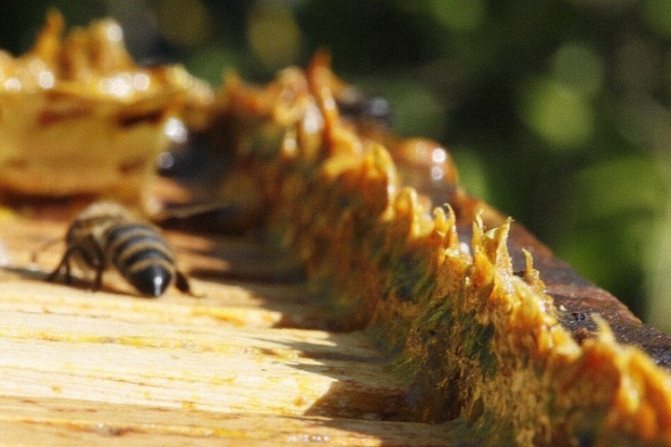

Nosematosis
The cause of this dangerous ailment is a single-celled protozoan parasite that lives in the intestines of an insect. After infection, the bee weakens and dies. You can destroy the parasite with vinegar vapor or by raising the temperature. The following should be noted signs of this disease:
- weakness of insects;
- loss of flight ability by insects;
- the onset of panic, as a result of which the bees begin to actively move;
- watery diarrhea with foul acid odor.
It is recommended to start treating this disease without delay. For this purpose, the entire bee colony must be moved to the hive, where a thorough disinfection has been carried out beforehand. Since the parasites that caused the disease cannot tolerate vinegar, an infected hive can be treated with this agent.Treatment is also effective when done with drugs such as Timol or Nosemat.
Amebiosis
The vascular system of bees is disturbed, the main parasite here is the amoeba. Symptoms and treatment are very similar to nosematosis, it is quite often possible to observe both types of invasive diseases at the same time.
Acarapidosis
The causative agent of this disease is a tick penetrated into the body of a bee. Since the parasite is not able to exist outside the body of the insect, then with the onset of death of the bee, the tick itself dies. The main danger of this disease is the latent clinical picture. And the parasite can get to healthy individuals in the following cases:
- when replacing the uterus;
- acquisition of a new bee family without appropriate veterinary documents;
- while walking bees;
- during contact of bees with families from other apiaries.
The disease mainly manifests itself in the winter or spring. Bees lose their ability to fly independently. They only crawl. At the slightest attempt to take off, they immediately fall. Diseased insects are mainly kept in groups.
Treatment of acarapidosis should be started if the disease has been confirmed by a laboratory. All treatment activities are carried out with use of the drug called Folbex, which is sprayed on sick individuals. The hive itself is also subject to processing, but ether sulfonate is used here.
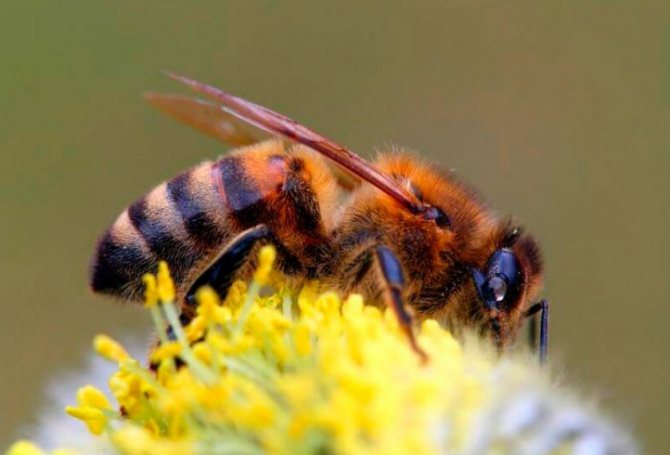

Braulez
It manifests itself due to lice (braula) living on the body of a bee. She sucks out strength, feeds on uterine food. Individuals affected by the braula quickly lose strength, cease to prey on nectar, and some die. Treatment should be carried out with phenothiazine.
Foul
This is the most contagious and most common disease among bees, caused by a spore-forming bacterium. Insects are mainly affected in the spring or summer. Signs nthe development of this disease are quite simple, and it is not difficult to recognize them, and this:
- very restless behavior of insects;
- constant change of poses in the cell;
- loss of elasticity by brood.
Treatment of this disease consists in the appointment of antibiotics. It should only be taken into account that if more than 50 individuals are infected, then the entire family is subject to complete destruction.
To prevent the onset and further development of the disease, it is necessary to carefully monitor the condition of the hive. It is necessary to remove old honeycombs, remove accumulated dirt, monitor the temperature regime. Disinfection of the entire "bee room" will not be superfluous, for which lye, acetic acid or hydrogen peroxide are used.
Based on the above, it must be remembered that for the successful and full-fledged development of beekeeping, the main task remains the timely detection and effective treatment of insect diseases. But it is best not to allow them to appear, so as not to run into further complications of the condition of the entire swarm, and not to suffer significant losses in this regard.
Acarapidosis
The cause of the appearance is a parasitic mite that colonizes the trachea of insects. The bees feed on hemolymph, so the parasites make slits in the trachea. Infection occurs from drones or wandering individuals, and transport of insects is also a fairly common cause of spread.
To make insects less sick and feel comfortable, every beekeeper should regularly monitor their nutrition, health and development. In order for bees to be as productive as possible, you need to carry out regular disease prevention and timely treatment after the first signs of the disease are detected.
Swarming process
The whole process looks like this:
- They begin to build cells in order to deposit larvae in them and feed them with royal jelly.
- In this way they raise new queens.
- When the clutch is completed, the workers seal the entrance to such cells.
- After 7 days, provided that the weather is warm enough and there is no wind, a swarming process occurs, as a result of which 1 brood is divided by 2.
- The old queen will fly out with the new worker bees, forming part of the family. The basic age of workers is no more than 1 month. Each worker carries a full goiter of honey to the house. Several drones are also preparing to fly from the apiary.
- This whole process takes about 10 minutes. That is, during this time, the total mass of bees in this state turns out to be outside the hive.
- In order for the queen to carry out the flight process, worker bees stop giving her special food for a certain period of time before the beginning of the swarming pore. As a result, her abdomen decreases in volume, and she becomes able to move over short distances.
- After they get out of the entrance, they occupy the nearest branches in the apiary or small ledges on the bushes and trees. They are grouped here in dense tangles. This is done so that the scouts can find the most optimal place for future housing. This usually takes at least 2 hours or more.
If the beekeeper does not have time to prevent the process of leaving his apiary, then he will most likely lose them forever.
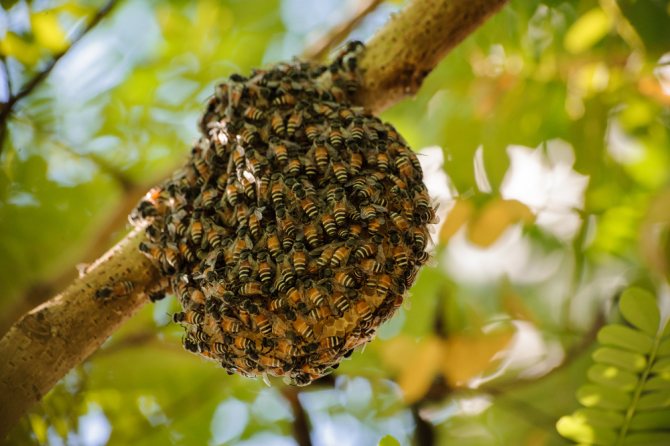

Part of the former family remains in the old house. Since brood is present here, after a certain period of time, new worker bees and new queens will appear. But, a new womb that has appeared, which has greater strength, will destroy all rivals in order to be able to copulate with drones and lead the family. It is she who will continue to lay eggs and build up the bee family. But until this happens, the weakened part will continue to rebuild the honeycomb and extract nectar.
What the brood is sick with
The most common brood diseases are:
American foulbroodwhich is of bacterial origin. The printed brood is affected. Infection of larvae occurs through the mouth. Bacilli are highly resistant - they do not lose their viability even after boiling for 10 minutes. And in honey or corpses of dead larvae, the pathogen can live for decades.
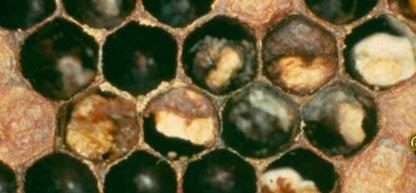

This is what rotten brood looks like
Infected larvae die within 3-4 days after the cell is printed, not having time to turn into a pupa. The rotting mass smells like wood glue. Subsequently, the larva dries up, forming a dense mass filled with the spores of the pathogen. Affected combs with brood are distinguished by caps concave inside the cell. The peak of the incidence occurs during the hot period of summer (its second half). For treatment, Apit, endopharm, oxyvit, baktopol, metasulfan are used.
European foulbrood only open brood is affected. The peak incidence occurs in the spring and the first half of summer. Infected larvae die 3-4 days after leaving the cells. The corpses are yellowish-gray in color and give off a sour paste smell. Treatment and prevention is carried out in the same way as for American foulbrood. The infection spreads between apiaries when buying sick families.
Baggy brood refers to viral diseases of the printed brood. The death of larvae in this disease occurs before they turn into pupae. Dead insects are contagious only in the first days after death. After a month, the infectiousness completely disappears.
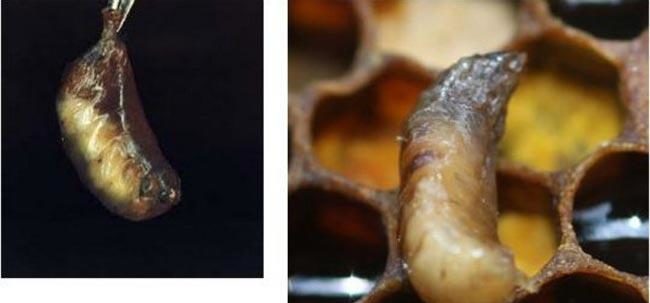

In strong families, the disease is successfully eliminated by the bees themselves. Weak nests need to be moved to a new hive on frames with artificial foundation. Biovit and Endoglyukin are used as medicinal products.
Ascospherosis or calcareous brood - a fungal disease caused by Pericystis Apis. The peak incidence occurs in late spring and early summer.Diseased larvae can be found in both sealed and open cells. When the closed cells are shaken, they emit a characteristic rattling sound. At the beginning of the disease, the insects are yellow-white, then they are covered with white fungal mycelium. After death, the calcareous brood dries out and looks like pieces of chalk. There is no unpleasant smell.
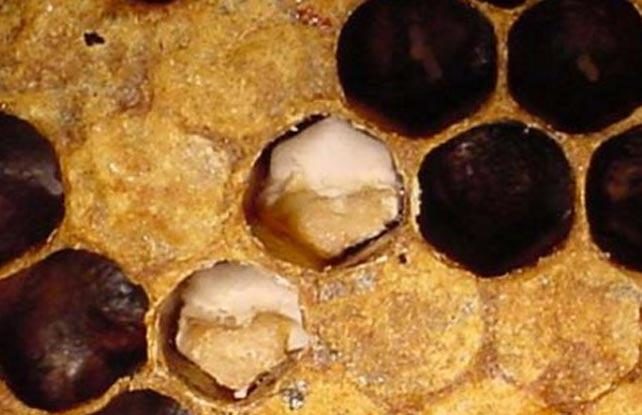

The defeat of larvae in calcareous brood
For treatment, Unisan, Ascocin, Ascid and Ascosan are used.
Aspergillosis or stone brood - another fungal disease. The causative agent Aspergillus Flower enters the hives together with the pollen of flowering plants. Infected larvae die off and become covered with a greenish bloom. Dead individuals turn to stone, hence the name of this disease.


Treatment is carried out with Asconazole or Unisan. Empty hives, in which infected families previously lived, as well as all equipment, must be treated with formaldehyde.
Treatment of a bee colony is always a complex measure that requires the most attentive approach from the beekeeper. It must be remembered that dirt and dampness in the nest is a very favorable environment for the reproduction of pathogenic microorganisms and parasites. And neglecting the disinfection of hands, equipment, or rearranging the frames from sick families to healthy ones will nullify all efforts to fight diseases.
General algorithm of actions
In case of laboratory confirmation of a dangerous infectious disease in the apiary, the owner informs the chief veterinarian of the area. The veterinarian introduces quarantine within a radius of seven kilometers around the apiary. This is reported to the beekeepers of the area. An unscheduled check is carried out on their farms.
During quarantine, it is prohibited:
- the sale of beekeeping products and the insects themselves;
- import of insects and equipment;
- export of bee colonies and queens;
- export of beekeeping products;
- entrance to unauthorized persons;
- migration to honey collection.
With the permission of the veterinarian, bees can be transported to a specially designated place. The nearest apiary must be at least 15 km away. Stopping points are disinfected.
When relatively dangerous diseases are detected in the apiary, restrictions are introduced. Sanitary measures are carried out:
- select unusable honeycombs and process them into wax;
- mark wax with the designation of the disease, for example, AS - ascospherosis;
- disinfect the honeycomb for up to two years;
- disinfect tap holes, frames, hives, inventory and overalls;
- do not expose the frames to dry after pumping out the honey, but immediately return to their place;
- do not use honey from sick bees as a top dressing for healthy ones;
- do not feed sugar syrup from a common feeder;
- do not use honey from dead bees for human food.
Move sick bees to clean hives and treat with syrup with the addition of drugs. Before lifting the quarantine, the equipment and inventory should be disinfected again.
Laboratory diagnostics
But reliable data on the state of bees can be obtained only on the basis of the analysis of various samples carried out in the veterinary laboratory.
When laboratory diagnostics are needed:
- In the spring, it is imperative to collect submarine samples in several hives and send them for analysis. The research results are entered into the apiary passport. Unhealthy apiaries are not allowed to roam!
- During the active period, the areas in front of the hives are regularly inspected. Here you can find several specimens of dead insects, which are handed over to the laboratory on suspicion of infection.
What to look for when diagnosing at home
The state of submergence indicates an existing disease:
- the fragility of dead bodies is observed with septicemia (the insect literally crumbles in the beekeeper's fingers);
- holes in the breast or abdomen indicate myiasis (these are the exit points of parasite larvae);
- small size and ugly body shape is a sign of varroatosis.
Brood thrown out near the hives also sometimes indicates an existing disease.This is not the main sign of infection, of course, since the larvae are removed from the nest even if they are mechanically damaged by the beekeeper during a careless examination. However, if there is a lot of brood, this is a reason to be wary and take samples to the laboratory.
Insects with swollen abdomens crawling near the hive are a clear sign of nosematosis. This picture is observed in the spring. Autopsy reveals a white midgut. And with dew toxicosis, it has a dark brown or black color.
Unnaturally twisted wings are a symptom of acarapidosis (insects get sick with it after rainy cold weather or in spring). With various bacteriosis and viroses, insects huddle and tremble. And in case of toxic damage, on the contrary, they are excited (some of the insects quickly die).


A sharp unpleasant smell when opening the nest indicates a disease of the family with foulbrood. And the presence of dark spots on the inner walls of the hive and the tap hole indicates damage to the digestive system (infection with nosematosis, amebiosis, salmonellosis, colibacillosis). The absence of brood during the active period of the bees' life is a clear sign of the death, disease or infertility of the uterus.
An important point: all the main preventive and curative measures fall on April. After all, sick bee colonies are not able to provide income. Often they become dependents of healthy nests, since they cannot even provide themselves with food supplies for the winter.
European foulbrood
Infectious disease affects open and closed brood. The disease is caused by microorganisms of four types. Bees can catch the disease in the spring, after a cold snap. Bee colonies are ill where there is not enough food or the expanded nests are poorly insulated. Affected larvae turn yellow and shriveled. They rot and take on a sour smell. When older larvae are affected, the caps above them become dark, perforated and sink inside.
The larvae, which have turned into crusts, are carried out by the bees themselves, and bees or nectar are brought into empty cells. The uterus, laying eggs, misses these cells, which leads to a variegated brood. This is the main symptom of the disease. To confirm the diagnosis, a bacteriological or serological study is performed. Do not confuse the disease with American foulbrood, paratrophy, varroosis. And also with saccular, cold or frozen brood.
If the bacterium M. pluton is found to be the causative agent of foulbrood, quarantine is introduced in the apiary.
Events are held:
- bees are provided with quality food;
- nests are cut and insulated;
- weak bee colonies unite;
- queens are replaced by healthy and fetal ones.
Treatment is similar to the previous case. Additionally, a vaccine against European foulbrood is used. The quarantine is lifted after a year. If only restrictions were introduced in the apiary, they are removed after successful treatment.
Probiotics - a modern solution for the prevention of bee diseases
For the prevention and treatment of bacterial diseases of bees, as well as to increase the viability of individuals, modern scientists recommend the use of veterinary probiotics. As you know, antibiotics for the treatment of bees cannot be used, since they accumulate in the end product - honey, and therefore the use of probiotic veterinary drugs becomes the optimal solution for a wide range of problems.
For example, the probiotic for animals and bees of a new generation Enteronormin is used for the prevention and treatment of bacterial and fungal diseases, increases the body's resistance to various non-infectious diseases, and improves the growth and development of individuals.
Scientists and practitioners have proven that the use of universal probiotics as complementary foods can significantly increase the lifespan of worker bees and reduce the incidence of diseases in bee colonies. Therefore, the use of probiotics, together with strict adherence to the standards of keeping bees, is the optimal solution for effective beekeeping!
Spiroplasmosis
The infectious disease affects adult bees. It appears in early summer, sometimes in September. It is caused by spiroplasm Spiroplasma melliferum. Sick insects do not fly, but crawl near the hive.Their abdomens swell and become hard. The intestines are full of undigested brown pollen.
To confirm the diagnosis, serological examination and microscopy of hemolymph smears are performed. It is important not to confuse the disease with paralysis, filamentvirosis, egyptovirosis, salmonellosis, colibacillosis, proteosis, hafniasis, or common poisoning.
With laboratory confirmation of spiroplasmosis in the apiary, restrictions are imposed. Standard procedures are followed. Additional measures are not required.
Sick bees are treated with tetracycline preparations. Prepare a solution at the rate of 300,000 units per liter of syrup. One family is given half a liter of medicinal syrup three times a day with an interval of five days.
Restrictions are removed after treatment and disinfection of the farm.
Melanosis
The disease is caused by the mushroom Melanosella mors apis. It infects queen bees. In a sick bee, the ovaries turn black and the abdomen enlarges. The uterus becomes inactive, egg-laying stops. The disease manifests itself at the end of summer, more often in old queens.
Mycological examination is performed to confirm melanosis. There is no cure. Sick queens are replaced with healthy ones.
The disease can be prevented:
- keep the uterus in the family for no more than two years;
- keep only high-quality food in the nests;
- in case of artificial insemination, wash the microsyringe correctly.
Cleaning the microsyringe - treat with iodine and alcohol for 10 minutes. Remove iodine residues by rinsing the instrument with 1% sodium bisulfate solution. Sterile saline is used for the final rinse.
Egyptovirosis
Egyptovirosis is not registered on the territory of Ukraine. An infectious disease deforms the wings of bees. Weakened bees die in families in autumn and winter. Young bees and pupae die at the same time.
Confirm the diagnosis by serological examination. Establish restrictions and conduct standard activities.
In the treatment of egyptovirosis, the antiviral drug Endoglukin has proven itself.
If an infectious disease is found in the apiary, proceed according to the official instructions for the elimination of bee diseases.
Acute paralysis
The disease affects only adult bees. The disease manifests itself in the summer. Insects stop flying, crawl on the ground in front of the hive and die. Paralysis develops rapidly against the background of a weakened body with other diseases, for example, varroosis.
Due to a similar clinical picture, the disease should not be confused with chronic paralysis, filamentvirosis, egyptovirosis, spiroplasmosis, colibacillosis, proteosis or hafniasis. The diagnosis is confirmed by serological examination.
In addition to sanitary measures, work is being carried out to reduce adverse factors:
- replacement of the uterus in a sick family;
- feeding bees with medicinal syrup with stimulating drugs;
- in the presence of a varroa mite in bees, measures are taken to reduce the degree of disease damage.
Acute paralysis is treated with antiviral drugs.

